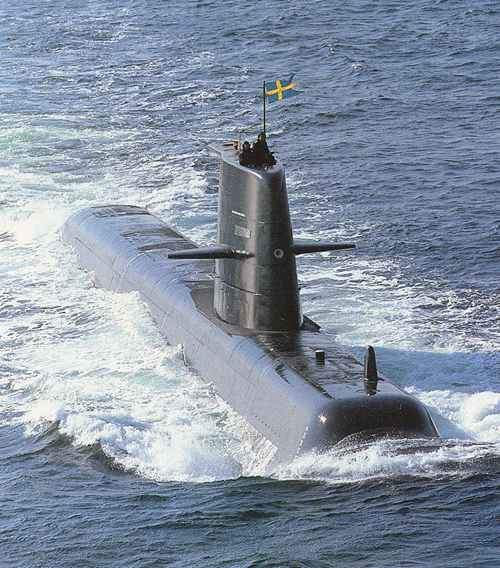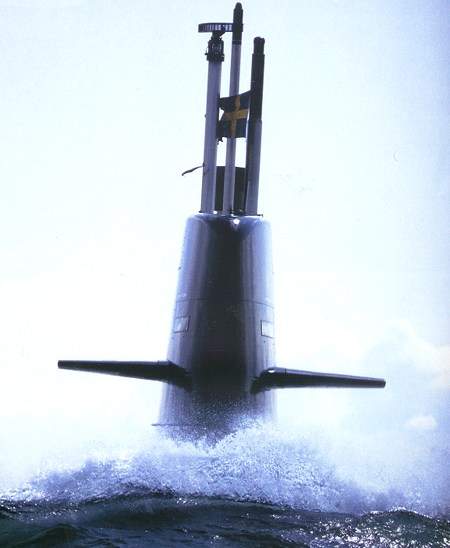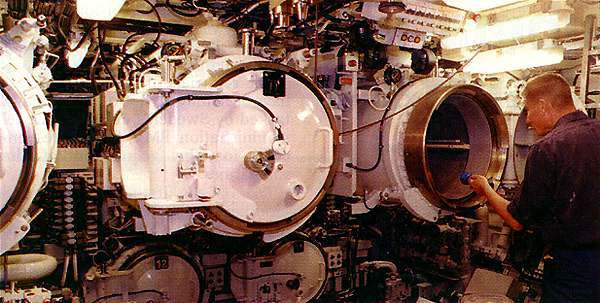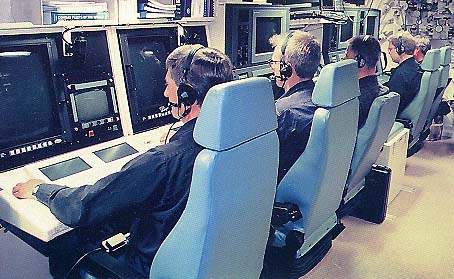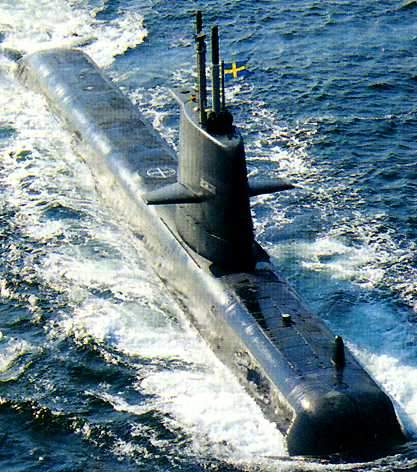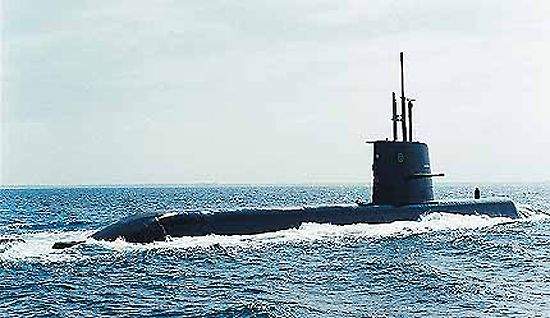Kockums were awarded the contract in March 1990 to build three Gotland Class submarines, HMS Gotland, Uppland and Halland. The first of class, HMS Gotland, was commissioned in 1996. The second and third, HMS Uppland and Halland, were commissioned in 1997. Kockums is owned by HDW of Germany.
In November 2004, the Swedish Government approved a proposal for the US Navy to lease HMS Gotland and crew for one year to participate in naval exercises. Gotland arrived at the Naval Air Station North Island, San Diego in June 2005. The submarine will operate in the opposing force (OPFOR) role. In June 2006, the lease was extended for a further year. In July 2007, HMS Gotland left San Diego to return to Sweden.
COMBAT MANAGEMENT SYSTEM
The ship’s combat management system is the 9SCS Mark 3 from Saabtech Vectronics (formerly CelsiusTech). The system carries the Swedish Royal Navy designation SESUB 940A. The system uses an extended version of the ADA software from Saabtech Vectronics’ 9LV Mk 3 surface ship combat management system.
The fire control system has the capacity to control several torpedoes in the water simultaneously. The 9SCS Mark 3 Combat Management System has three Type IID multifunction consoles from Terma. The terminals are for command and control, communications, and weapon control. The consoles are connected via a dual-Ethernet, copper-wire, Local-Area Network (LAN).
In January 2006, the Swedish government placed an order with Saab Systems for the upgrade of the combat system. The new system is called SESUB 960. Navigation, sensor management and weapon handling systems will also be upgraded.
TORPEDOES
The submarines are fitted with four 533mm torpedo tubes and two 400mm torpedo tubes. The Bofors Underwater Systems Type 613 torpedoes are fired from the 533mm tubes. The Type 613 is a heavy-weight anti-surface ship torpedo. It has wire guidance and passive homing, delivering a warhead of 240kg. The launch of the torpedo is by swim-out discharge: the speed is 40kt and the range, 20km. The 613 torpedo equips all Sweden’s submarines, the A19 Gotland, A17 Vastergotland, A14 Nacken and A12 Sjoorrmen.
Saab Bofors Underwater Systems has developed a new heavyweight torpedo for the Swedish Navy, the Torpedo 2000 (Swedish Navy designation Torpedo 62).
It is a high-speed anti-submarine / anti-surface torpedo with a range of more than 40km and speed of over 40kt.
The Gotland Class submarine will be equipped with the Torpedo 2000, which is fired from the 21in tubes. Gotland has the capacity to carry sixteen Torpedo 2000s. The combat system on the Gotland class submarines will be adapted to accommodate a new generation of torpedoes including the new Torpedo 2000, which will become the submarine’s principle weapon.
The two 400mm tubes fire the Saab Bofors Underwater Systems Type 43 lightweight anti-submarine torpedo. The planned modifications to the submarine’s combat system will accommodate Saab Bofors new lightweight Type 43×2 anti-submarine / anti-surface ship torpedo. The Type 43×2 is wire-guided and has improved tracking compared to the standard Type 43 torpedo. Each 400mm tube will take two Type 43×2 torpedoes.
The Gotland deploys the Saab Bofors Underwater Systems stand-off self-deployed Mine 42. The Mine 42, derived from a Type 27 torpedo, travels unguided to a predetermined location to lay on the seabed. The submarine also has the capacity to carry 48 mines mounted externally in a girdle arrangement.
SENSORS SUITE
The submarine is equipped with a CSU 90-2 integrated sonar sensor suite from Atlas Elektronik. This includes a passive cylindrical bow array, an intercept array and two passive flank arrays. The sonar system uses ADA software.
The submarine is fitted with a Kollmorgen search and attack periscope and a Terma Scanter navigation radar. The electronic support measures system is the Thales Defence Ltd. Manta radar surveillance and warning system. Manta carries out surveillance, detection, analysis, classification and identification of hostile radar threats from D-band to J-band.
PROPULSION SYSTEMS
The submarine is equipped with two MTU diesel engines and two Kockums V4-275R Stirling Air Independent Propulsion (AIP) units. The Stirling engines are mounted in elastic, soundproof modules and each provide up to 75kW. The submarine has the capacity for two weeks of air independent propulsion at a speed of 5kt without snorting.
The AIP uses liquid oxygen and diesel fuel in a controlled inert (helium) environment. The AIP liquid oxygen tanks are located on the deck below the engines. The propulsion system provides a speed of 11kt surfaced and 20kt dived.

